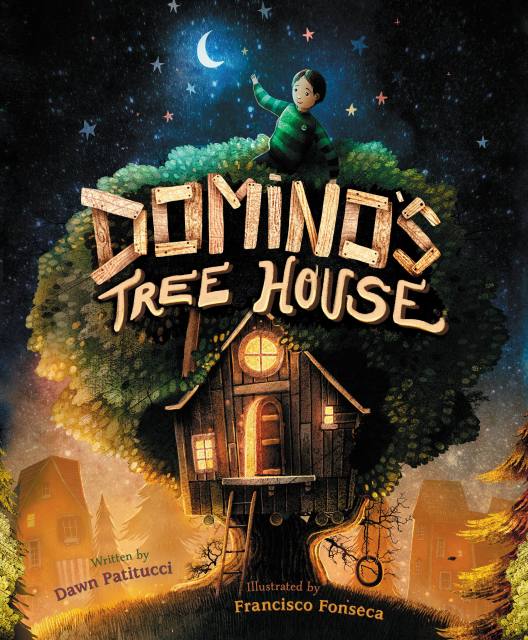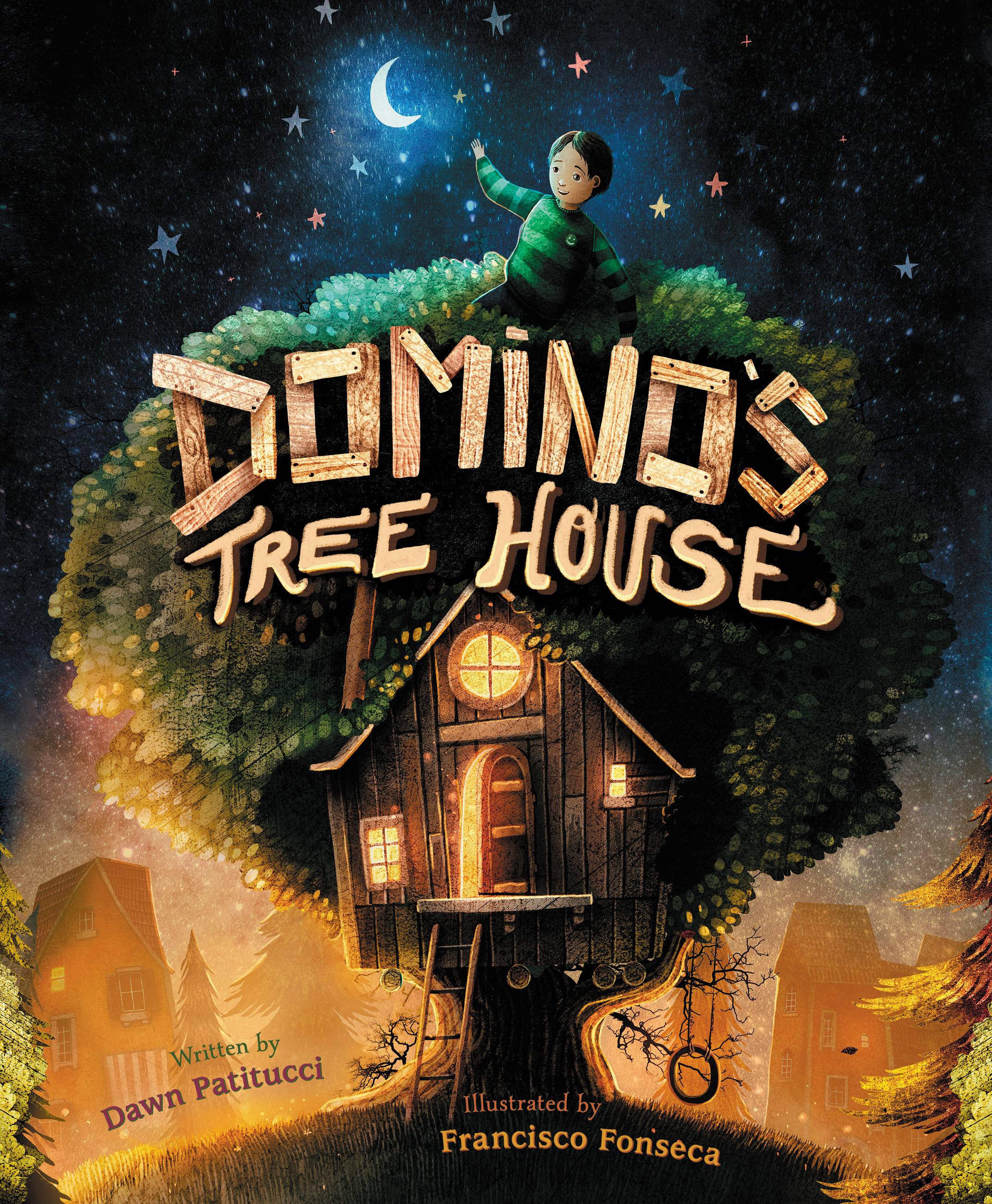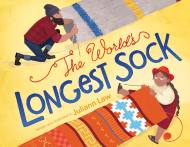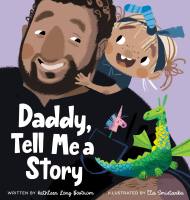Promotion
Use code MOM24 for 20% off site wide + free shipping over $45
Domino's Tree House
Contributors
Illustrated by Francisco Fonseca
Formats and Prices
Price
$17.99Price
$22.99 CADFormat
Format:
Hardcover $17.99 $22.99 CADThis item is a preorder. Your payment method will be charged immediately, and the product is expected to ship on or around May 23, 2023. This date is subject to change due to shipping delays beyond our control.
Also available from:
Domino’s backyard isn't enough for him, so he builds a tree house. When the tree house isn't quite enough, he builds a tree cottage, then a tree mansion, and on and on, pursuing something "more"—something that he can't put his finger on and can't quite reach. In a series of escalating feats of tree-house engineering, Domino builds and builds, until he finds himself alone on the moon, still not satisfied.
Gorgeous illustrations of a gravity-defying tree house will capture little ones' imaginations, while the satisfying conclusion will remind young readers that wanting more might cause us to miss the sweetness of what we already possess.
Genre:
-
A boy’s lofty plans lift him higher than he ever thought possible.Domino, a youngster with light skin and a shock of brown hair, lies in the grass. He sees the tree and its leaves, but he wants more. So he builds a treehouse but still feels unsatisfied. So he builds a “cozy tree cottage” (connected to the treehouse via a staircase). It’s still not enough. So Domino builds even more additions: a “magnificent tree mansion,” a “majestic tree castle,” and at the very top, a “tree skyscraper.” The skyscraper happens to have a garden rooftop with a tree. Which, of course, needs a treehouse. Thus starts a madcap construction pattern that Domino repeats, lifting him higher and higher into the atmosphere. Will this teetering, gravity-defying tower ever be enough? After reaching the cold, lonely moon, Domino returns home with an enlightened consciousness, grateful for the grass and tree that started it all. Though this tale takes on a complex theme—the fine line between ambition and greed—the warm jewel tones and outlandishness of the premise (building houses upon houses) make it appealing and understandable to a young audience. It’s also likely to have kids discussing the protagonist’s choices and what it means to appreciate what we have. (This book was reviewed digitally.)A strong conversation starter that will stay with children long after the book is closed. (Picture book. 4-8)Kirkus Reviews
-
Domino, playing outdoors on a beautiful day, has a feeling of “not enough.” His discontent leads him to build a tree house, where he lounges and snacks until discontent finds him again, and then he builds a tree mansion on top of his tree house. Then a tree castle. Then a tree skyscraper. Nothing is quite satisfactory, so he keeps building structure upon structure until he reaches the moon. Fonseca’s illustrations, with their delicate lines and crosshatching, have a lovely handcrafted feel. The colors move from earthy greens and browns to brighter yellows and blues as Domino’s structures become more whimsical and far-fetched. Double-page spreads angled from a vantage point above the action provide sweeping panoramas that show the heights Domino’s unchecked ambition has reached, as well as his increasing isolation as his home, his town, and eventually Earth itself recedes and he reaches the moon, cold and dark. Realizing that “there was nothing on the moon but the moon,” he parachutes back to Earth, where he finds the contentment he was looking for in the cool grass and gentle breezes of his own backyard. Playful and thought-provoking in equal measure. ADRIENNE L. PETTINELLIAdrienne L. Pettinelli, The Horn Book
- On Sale
- May 23, 2023
- Page Count
- 32 pages
- Publisher
- WorthyKids
- ISBN-13
- 9781546002994
Newsletter Signup
By clicking ‘Sign Up,’ I acknowledge that I have read and agree to Hachette Book Group’s Privacy Policy and Terms of Use







